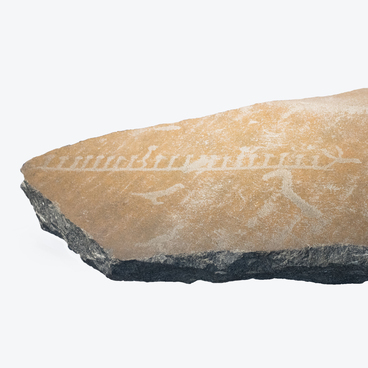During the Great Northern War, the Russian Navy needed artillery weapons. Peter I organized the domestic production of cannons and cannonballs. In late August — early September 1703, a Petrovsky factory was founded on the shores of Lake Onega at the mouth of the Lososinka River.
In 1704, the metallurgist Yakov Vlasov cast the first cannon. Peter I, having learned about this, wrote, “We are very happy about the readiness of the iron factories …”
The water route “Lake Onega — Svir River — Lake Ladoga — Neva River — Baltica” was used to deliver naval cannons to the fleet. Petrovsky factories played a big role in Russia’s victory in the Great Northern War, but when the war ended, they fell into disrepair.
In 1774, Empress Catherine II founded a new plant, the Aleksandrovsky factory, located upstream of the Lososinka River. The construction and production were headed by engineer Anikita Yartsov. However, when he was managing the factory, cannons with a large percentage of defects were produced. During the tests on Lake Onega, every fourth cannon exploded.
Then Catherine II invited the best metallurgist in Europe, a Scotsman Charles Gascoigne, to be the head of the factory. Gascoigne’s transfer to Russia took five years. First, he requested ore samples and examined them in England. It turned out that the ore contained large amounts of sulfur and phosphorus. To get rid of these impurities, Gascoigne decided to raise the temperature in a blast furnace, i.e. a furnace for smelting iron from iron ore. For this, he brought a special air blower to Russia. This equipment was installed on the river: the water current turned the wheels driving the engine, which pumped oxygen into the furnace, thus increasing the melting temperature.
The National Museum of the Republic of Karelia houses a scale model of a blast furnace. This model is over 180 years old. It was made by the citizens of Petrozavodsk — the Tripetsky brothers. For some time the exhibit was housed in the State Hermitage, but then it was transferred to the Karelian State Museum of Local History. The model demonstrates the operation of the furnace — how air is compressed and fed into the furnace to maintain constant high temperature to melt the metal.
In 1704, the metallurgist Yakov Vlasov cast the first cannon. Peter I, having learned about this, wrote, “We are very happy about the readiness of the iron factories …”
The water route “Lake Onega — Svir River — Lake Ladoga — Neva River — Baltica” was used to deliver naval cannons to the fleet. Petrovsky factories played a big role in Russia’s victory in the Great Northern War, but when the war ended, they fell into disrepair.
In 1774, Empress Catherine II founded a new plant, the Aleksandrovsky factory, located upstream of the Lososinka River. The construction and production were headed by engineer Anikita Yartsov. However, when he was managing the factory, cannons with a large percentage of defects were produced. During the tests on Lake Onega, every fourth cannon exploded.
Then Catherine II invited the best metallurgist in Europe, a Scotsman Charles Gascoigne, to be the head of the factory. Gascoigne’s transfer to Russia took five years. First, he requested ore samples and examined them in England. It turned out that the ore contained large amounts of sulfur and phosphorus. To get rid of these impurities, Gascoigne decided to raise the temperature in a blast furnace, i.e. a furnace for smelting iron from iron ore. For this, he brought a special air blower to Russia. This equipment was installed on the river: the water current turned the wheels driving the engine, which pumped oxygen into the furnace, thus increasing the melting temperature.
The National Museum of the Republic of Karelia houses a scale model of a blast furnace. This model is over 180 years old. It was made by the citizens of Petrozavodsk — the Tripetsky brothers. For some time the exhibit was housed in the State Hermitage, but then it was transferred to the Karelian State Museum of Local History. The model demonstrates the operation of the furnace — how air is compressed and fed into the furnace to maintain constant high temperature to melt the metal.


